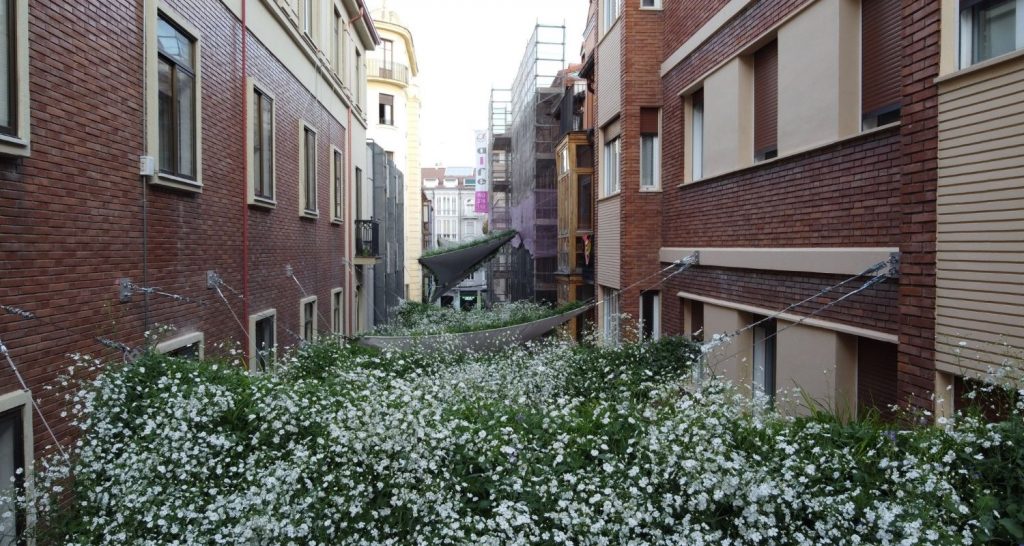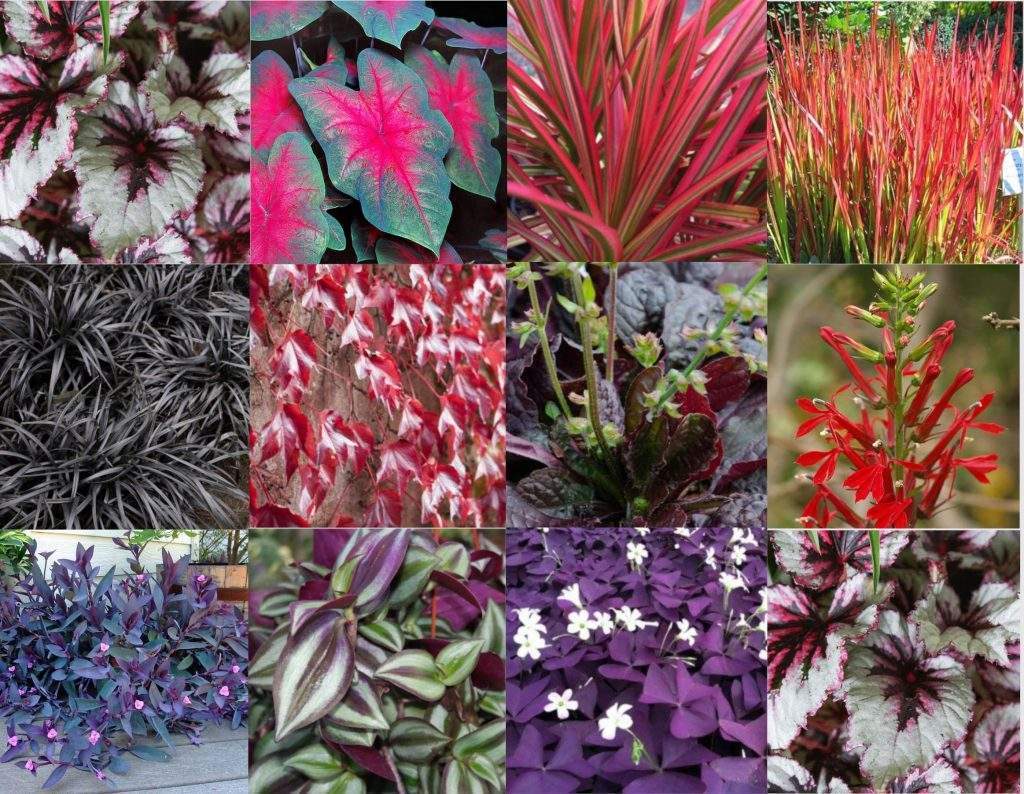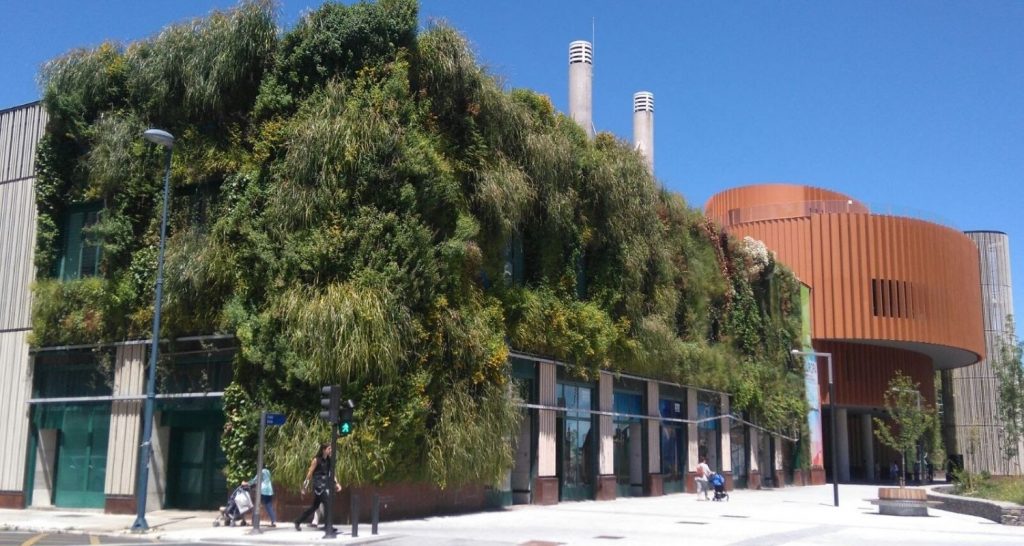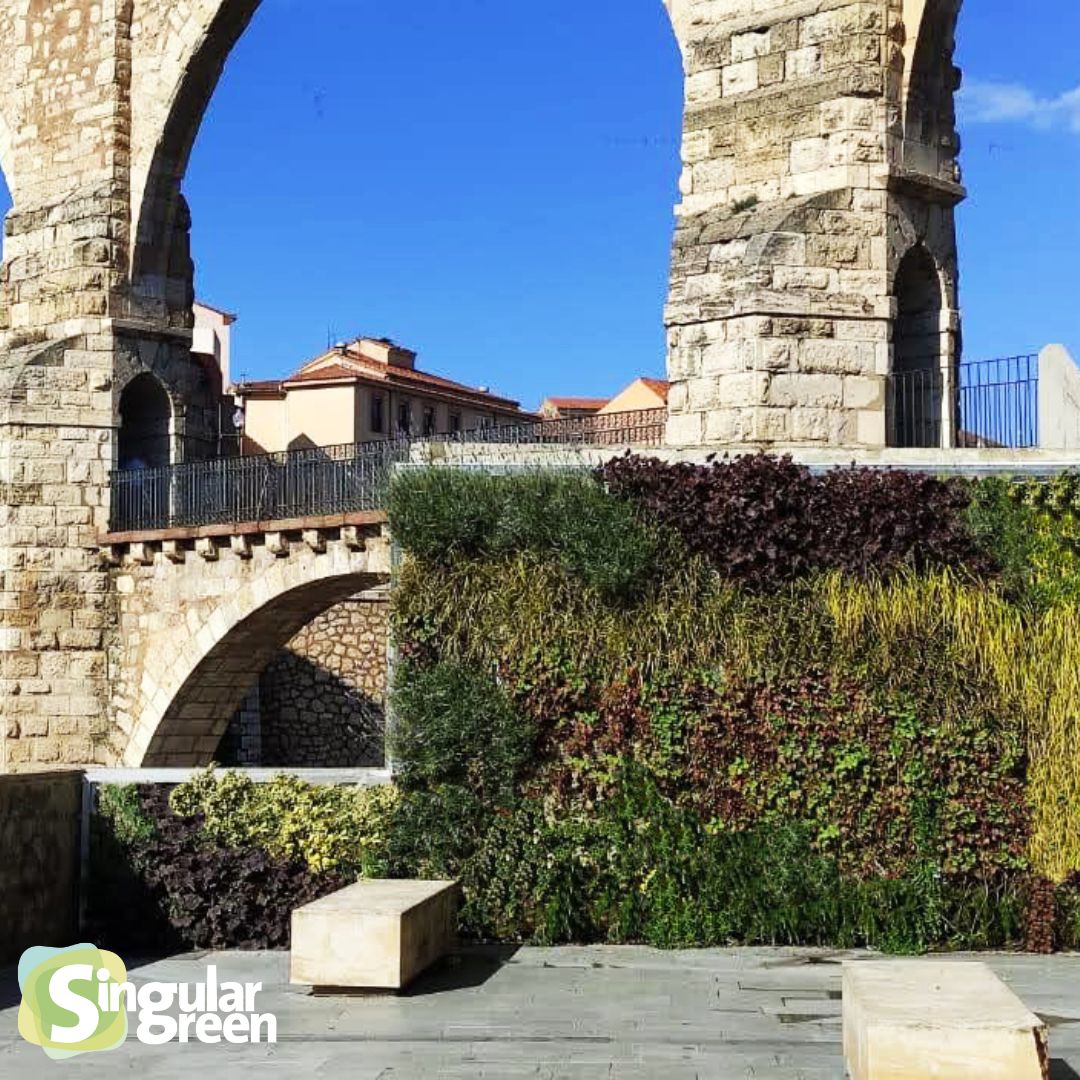To talk about low-maintenance plants for outdoor vertical gardens, we want to give you an example of the vertical garden we created in San Vicente del Raspeig, Alicante.
We have shared the entire process of this garden through several articles. For those who haven’t seen them, we’ll leave them here in case you want to take a look:
As a summary and to provide context, in the previous articles, we talked about the previous state of the vertical garden before its rehabilitation by our company, SingularGreen, how we installed the new vertical garden, and the criteria for selecting species.
Once the selection criteria were established, we only needed to select the plants and plan for their maintenance.
First, we will talk about the species selected for this vertical garden. We recommend these plants as low-maintenance options for other green walls, such as exterior vertical gardens.
Low-Maintenance Plants for Exterior Vertical Gardens
We believe that low-maintenance plants are almost essential to achieving success in a vertical garden. If the plants require frequent maintenance or are susceptible to pests and diseases, there can be potential problems in the vertical garden.
Without further ado, here are the selected low-maintenance plants for exterior vertical gardens:
1. Acorus gramineus – Acoro verde
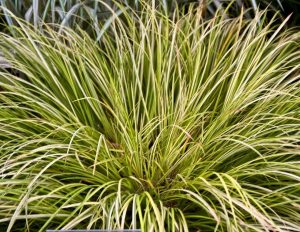
The Acorus genus is present naturally throughout Europe, and in Alicante in particular, we can find it through the Acorus calamus species. The choice of the project, Acorus gramineus, is due to its good adaptation to vertical gardens and its good performance during colder periods.
This grass reaches a maximum height of 35cm and produces discreet and very low-occurring flowers. In addition, growth is slow and steady.
Maintenance of this plant is very simple, and annual pruning for growth control is sufficient. It is practically unaffected by pests and diseases.
2. Heuchera ‘Melting Fire’ + Heuchera ‘Palace Purple’
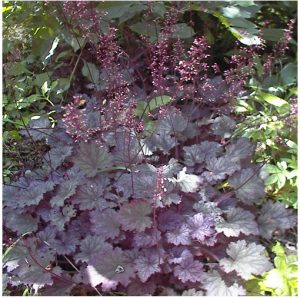
These perennial herbs have their origin in North America, but are widely distributed all over the world and can be easily found as ornamentals. They are characterized by having vividly colored foliage that stands out over the flowers, which have little ornamental interest.
The proposed species, Heuchera micrantha ‘Melting Fire’ and Heuchera americana ‘Palace Purple’, have leaves in dark red and purple colors. Both form a densely populated clump that does not exceed 40 cm in height.
Maintenance of Heucheras is very simple, with pruning of flower stems and dry or wilted leaves. Regarding susceptibility to pests and diseases, it may be susceptible to powdery mildew and leaf spots, but only in very specific situations of excess moisture.
3. Tulbaghia violacea
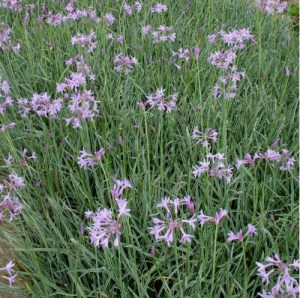
Tulbaghia violacea is a rhizomatous plant used in gardening for its violet flowering and its resistance to different types of irrigation, as it is a semi-aquatic plant that can withstand waterlogging and, at the same time, can tolerate long periods of drought.
We have chosen this plant for the design due to its resistance and to create a dark green background on which other species with greater height stand out. In addition, its scent serves as a repellent for fleas, ticks, mosquitoes, and snakes.
The garden garlic requires practically no maintenance, just light annual pruning and removal of inflorescences once the flowering season is over. The incidence of pests and diseases is practically nil.
4. Lonicera nitida – Madreselva de hoja
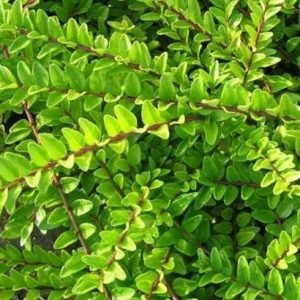
The Lonicera genus is widely represented in the province of Alicante, with species such as Lonicera biflora and Lonicera periclymenum. The chosen species, Lonicera nitida, has less climbing characteristics and is more shrub-like.
This woody plant has a dark green color and is used in the design to create green volumes that stand out from the vertical garden.
Lonicera nitida is a shrubby plant highly valued in gardening for its ability to withstand pruning for topiaries and other plant sculptures.
Maintenance requires annual pruning for shaping. The plant is virtually free of pests and diseases.
5. Carex morrowii everline
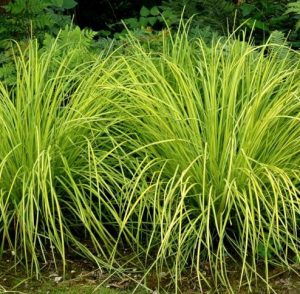
The Carex genus is naturally present in almost the entire province of Alicante, with species such as Carex halleriana, Carex distachya, or Carex humilis. This Carex species is an ornamental option from the same botanical genus, which has a special aesthetic characteristic with its yellowish-green foliage.
Aesthetically, in the composition of the garden, it serves to create a yellow-green background texture without volume around other species with a greater presence that will stand out over it.
It is a plant that adapts to a multitude of situations, from full sun to areas with partial shade, which is why it is placed in the middle and upper areas of the vertical garden design.
Maintenance of this tufted plant is very simple, with only annual trimming required. The occurrence of pests and diseases is practically non-existent.
6. Armeria maritima
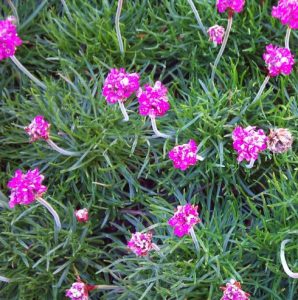
Armeria or Sea Thrift is a plant widely distributed throughout the Mediterranean basin, especially in rocky coastal areas, dunes, coastal scrub or marshes, always in full sun.
In the province of Alicante, there are populations of Armeria maritima, Armeria alliacea, and Armeria filicaulis spread throughout its geography.
Our proposal includes this species in the middle zones of the garden, where it will receive the exact amount of sunshine it is accustomed to.
Maintenance of Armeria is almost negligible, limited to the removal of flower remains once a year and control of pests and diseases, of which it has little affection.
7. Asparagus sprengeri
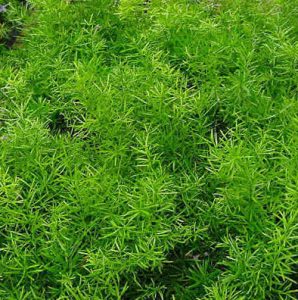
Esta esparraguera es la opción ornamental de las esparragueras autóctonas de Alicante, como Asparagus albus, Asparagus officinalis o Asparagus horridus. Todas ellas frecuentes en ecosistemas mediterráneos y bien adaptadas a zonas litorales secas y semiáridas.
El espárrago helecho se sitúa en las zonas medias del jardín, en las que recibirá la insolación exacta a la que está acostumbrada.
El mantenimiento de esta esparraguera es muy sencillo, con podas de formación y recortes de forma puntual. La afección de plagas y enfermedades es prácticamente nula.
8. Cyrtomium falcatum
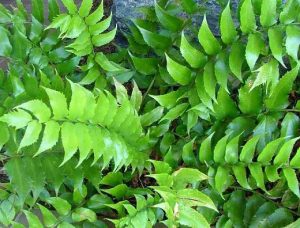
This ornamental asparagus is a cultivated option of the native asparagus in Alicante, such as Asparagus albus, Asparagus officinalis, or Asparagus horridus, which are frequent in Mediterranean ecosystems and well adapted to dry and semi-arid coastal areas.
The asparagus fern is located in the middle areas of the vertical garden, where it will receive the exact amount of sunlight it needs.
Maintenance of this asparagus is very simple, with pruning for shaping and occasional trimming. It is also not prone to pests and diseases.
9. Dryopteris atrata
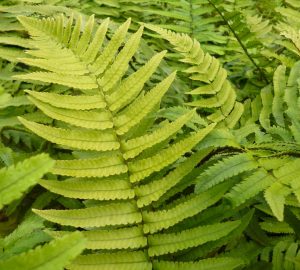
This fern is naturalized in the north area of Alicante and is widely used for ornamental purposes. It is a very robust fern with great resistance, ideal for areas of partial shade and shade, and it can even withstand direct sunlight in the morning or afternoon. Moreover, it is one of the least sensitive ferns to cold, being able to survive light frosts. Therefore, in the vertical garden design, we have placed it in the lower areas of the garden, the darkest ones.
Maintenance for this fern is minimal, mainly consisting of light pruning of the fronds. In terms of pest and disease susceptibility, it is low or almost non-existent.
10. Heuchera americana ‘Dale’s Strain’
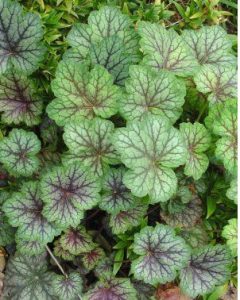
These perennial herbs originate from North America, but are widely distributed worldwide and are commonly found as ornamental plants. They are characterized by vividly colored foliage, which stands out over the flowers, with little ornamental interest.
The proposed species Heuchera americana ‘Dale’s Strain’ has green leaves with veins in shades of green and dark purple. It forms a densely populated mat that does not exceed 40 cm in height.
Maintenance of Heucheras is very simple, requiring only pruning of flower stems and removal of dry or wilted leaves. As for susceptibility to pests and diseases, they may be susceptible to powdery mildew and leaf spots, but only in situations of excess humidity.
11. Nephrolepis exaltata – Helecho espada
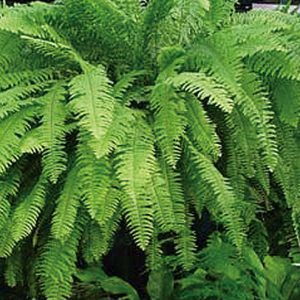
In the province of Alicante, the Nephrolepis genus is found in the wild in the northern zone, with the species Nephrolepis cordifolia. The proposed species is an ornamental option that is practically identical to the previous one.
The sword fern is a widely used indoor plant thanks to its resistance, low fertilization requirements, and ability to thrive in low-light environments. It is very effective at eliminating pollution, especially in absorbing formaldehyde from the atmosphere.
For these reasons, we have included it in the design in the lower part of the vertical garden where it will be in shade and generate areas of greater volume in that zone.
Maintenance consists of annual pruning, cleaning, and removal of dry fronds that may remain in the back of the plant volume and pruning of rhizomes that can propagate the fern invading other parts of the garden. The susceptibility to pests and diseases is practically null.
12. Chlorophytum comosum variegatum
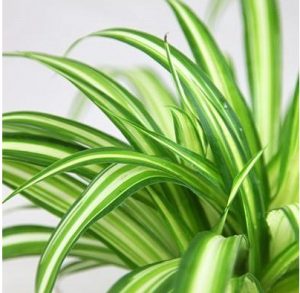
Snake plants, also known as Mother-in-Law’s Tongue, are widely used as ornamental plants and have an incredible air-purifying function, especially against carbon monoxide, xylene, and formaldehyde.
These plants adapt well to a variety of light conditions, from partial shade to almost complete shade, which is why they are included in the middle and lower sections of the vertical garden design.
Maintenance of snake plants is very simple, involving the occasional removal of offshoots and dry leaves.
13. Adiantum capillus-veneris
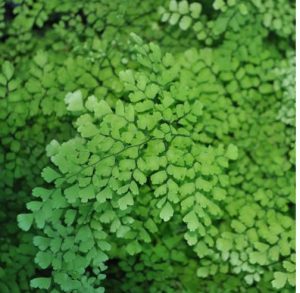
The Hart’s Tongue fern is naturally present in the province of Alicante, typically in humid areas such as wells, fountains, and damp walls.
Therefore, our proposal includes it in the lower areas of the vertical garden, which are the darkest since they receive less sunlight throughout the day, and the most humid since this reduced sunlight means that less water evaporates from the substrate.
The maintenance of this fern is limited to occasional pruning for training purposes, and its susceptibility to pests and diseases is very low.
14. Vella lucentina
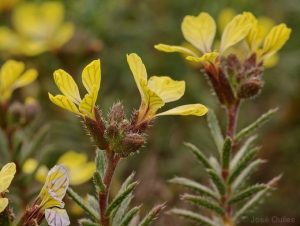
Vella lucentina is an endemic shrub species to the surroundings of the city of Alicante, discovered in 1992 and classified as vulnerable by the International Union for Conservation of Nature (IUCN). It only inhabits an area of about 12 kilometers distributed in areas between the municipalities of Alicante, San Vicente del Raspeig, Agost, Monforte, and Muchamiel. Specifically, the two main populations are located in the natural areas of Bec de l’Aguila in San Vicente del Raspeig, occupying about 2.6 square kilometers, and Alcoraya in Alicante.
We have reserved a specific area in the upper part of the vertical garden for its placement. Given the special growing conditions that this species requires, we have made some modifications in that area of the garden to ensure its proper development. To ensure its growth alongside other species in the garden, we have modified the pockets in that area with a rock wool substrate that guarantees 70% aeration, avoiding excessive humidity in the root collar.
We believe that the inclusion of this species in the vertical garden is appropriate as an exercise in recovering local flora and as an educational resource. We understand that the vertical garden performs various functions, in addition to its ornamental role, including the recovery of species and education, which we consider to be of utmost importance.
15. Carex morrowii everest
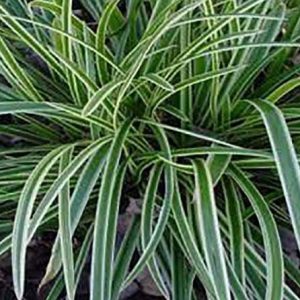
The Carex genus is present naturally in almost the entire province of Alicante, with species such as Carex halleriana, Carex distachya, or Carex humilis. This Carex species is an ornamental option within the same botanical genus, characterized by its special green and white banded foliage.
Aesthetically, it creates a green-white background texture without volume around other species with greater height that will stand out above it in the garden design.
It is a plant that adapts to various situations, from full sun to partial shade. That is why it is in the middle and upper areas of the vertical garden design.
The maintenance of this clumping plant is straightforward, with only annual trimming required. Its susceptibility to pests and diseases is practically nonexistent.
Maintenance of vertical gardens
After finishing the chapter on low maintenance plants for exterior vertical gardens, we move on to maintenance. Although we have selected low maintenance plants for exterior vertical gardens, it is obvious that all vertical gardens require some care.
Therefore, we have established two periods in which maintenance should be carried out:
Monthly maintenance Biannual maintenance
Monthly maintenance:
During monthly maintenance, the following tasks should be carried out:
En el mantenimiento mensual debemos de llevar a cabo las siguientes tareas:
- Check the irrigation system to ensure that all elements of the hydroponics are in perfect condition, that there is fertilizer and acid.
- Check the water collection channel for any blockages.
- Inspect the plants to ensure that there are no pests or problems with the vegetation.
- Carry out minor pruning if deemed necessary.
Biannual maintenance:
During biannual maintenance, the following tasks should be carried out:
- Deep and thorough pruning, mainly to eliminate weeds. In exterior gardens, these types of plants reproduce a lot due to birds, insects, and the air. These elements cause seeds to fall into the vertical garden substrate and colonize everything. These plants, called weeds or opportunistic plants, are colonizers and can grow brutally within the garden due to the favorable substrate conditions.
- Rejuvenation pruning, which involves removing a lot of plant material, such as leaves, stems, and dry flowers, to help the plants regenerate and rejuvenate.
In our case, to be even more secure, we have remote control systems that send us daily alerts. If there were any problems, mainly with irrigation, the system would let us know. With these devices, if any problems arise, we don’t even have to wait a month; we can quickly solve the problems and avoid larger issues.
We hope that this list of low maintenance plants for exterior vertical gardens has been helpful. If you want to know more about vertical gardens, we are at your disposal.



